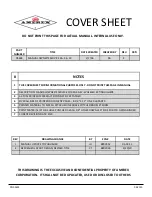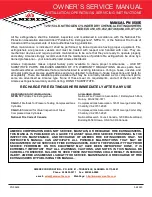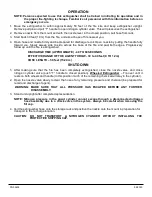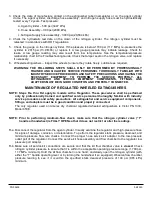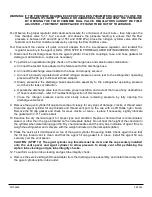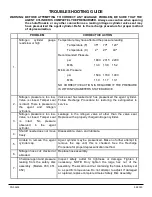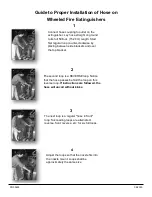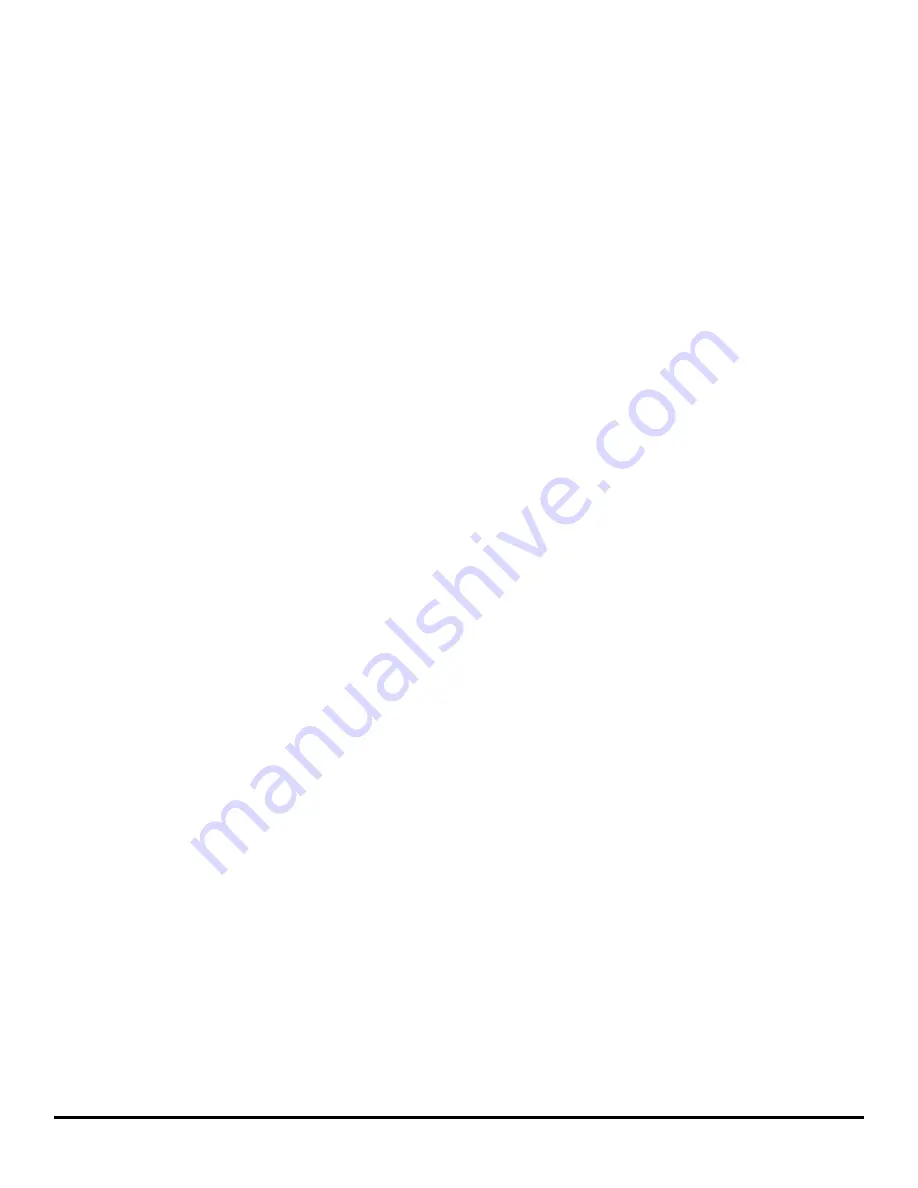
PN 05605
04/2020
3. Check the date of manufacture printed on the extinguisher label (nameplate) or on the agent cylinder
dome. The agent cylinder, discharge hose assembly, and nitrogen supply hose must be hydrostatically
tested every 12 years. Test pressure:
a. Agent Cylinder –
500
psi (3447 kPa)
b. Hose Assembly –
300
psi (2068 kPa)
c. Nitrogen Supply hose assembly
-
3000 psi (20,684 kPa)
4. Check the hydrostatic test date on the crown of the nitrogen cylinder. The nitrogen cylinder must be
retested in accordance with DOT regulations.
5.
Check the gauge on the nitrogen cylinder. If the pressure is below 1700 psi (11.7 MPa) re
-
pressurize the
cylinder to 2015 psi (13.9 MPa) or replace it. A low gauge pressure may indicate leakage. Check for
leaks. A low gauge reading may also result from low temperature. See the temperature/pressure
relationship chart in the Troubleshooting Guide. Check the tamper seal on the nitrogen valve, and replace
if necessary.
6.
Wheeled extinguishers –
Inspect the wheels to insure they rotate freely. Lubricate as required.
WARNING: THE FOLLOWING STEPS SHALL ONLY BE PERFORMED BY PROFESSIONALLY
TRAINED AND QUALIFIED SERVICE PERSONNEL THOROUGHLY FAMILIAR WITH
INDUSTRY SERVICE PROCEDURES AND SAFETY PRECAUTIONS AND HAVING THE
NECESSARY EQUIPMENT TO PERFORM THE SERVICE PROPERLY. ALL
EXTINGUISHER AND SERVICE EQUIPMENT COMPONENTS, FITTINGS, AND
ADAPTERS MUST BE IN GOOD CONDIITON AND PROPERLY CONNECTED.
MAINTENANCE OF REGULATED WHEELED EXTINGUISHERS
NOTE: Steps R
-
a thru R
-
d apply to models with a Regulator. These procedures shall be performed
only by professionally trained and qualified service personnel thoroughly familiar with industry
service procedures and safety precautions. All extinguisher and service equipment components,
fittings, and adapters must be in good condition and properly connected.
The only regulator used on Amerex dry chemical regulated wheeled extinguishers is Victor PN 1333,
Model 450E.
NOTE: Prior to performing minimum
-
flow check, make sure that the nitrogen cylinder valve
(“
T
”
handle or handwheel) is FULLY OPEN so that it does not restrict or alter the readings.
R
-
a. Disconnect the regulator from the agent cylinder. Visually examine the regulator and high
-
pressure hose
for signs of damage, corrosion, or deterioration. To perform the regulator static pressure, dead
-
set, and
minimum
-
pressure flow rate checks. Connect the proper hose service kit adapter to the low
-
pressure
outlet port of the regulator. Connect the service kit hose assembly and flow chamber to the regulator low
pressure port adapter.
R
-
b.
Make sure all service kit connections are secure and that the kit flow chamber valve is
closed
. Check
nitrogen cylinder pressure to ensure that it is within the acceptable operating pressure range (1,700 psi,
11.7 MPa minimum). Hold the kit flow chamber in one hand, and slowly open the nitrogen cylinder (with
either the
“
T
”
handle operating lever or by turning the handwheel if so equipped). Observe flow chamber
pressure reading to see if it is within the specified static dead
-
set pressure of 140 psi (965 kPa)
minimum.

